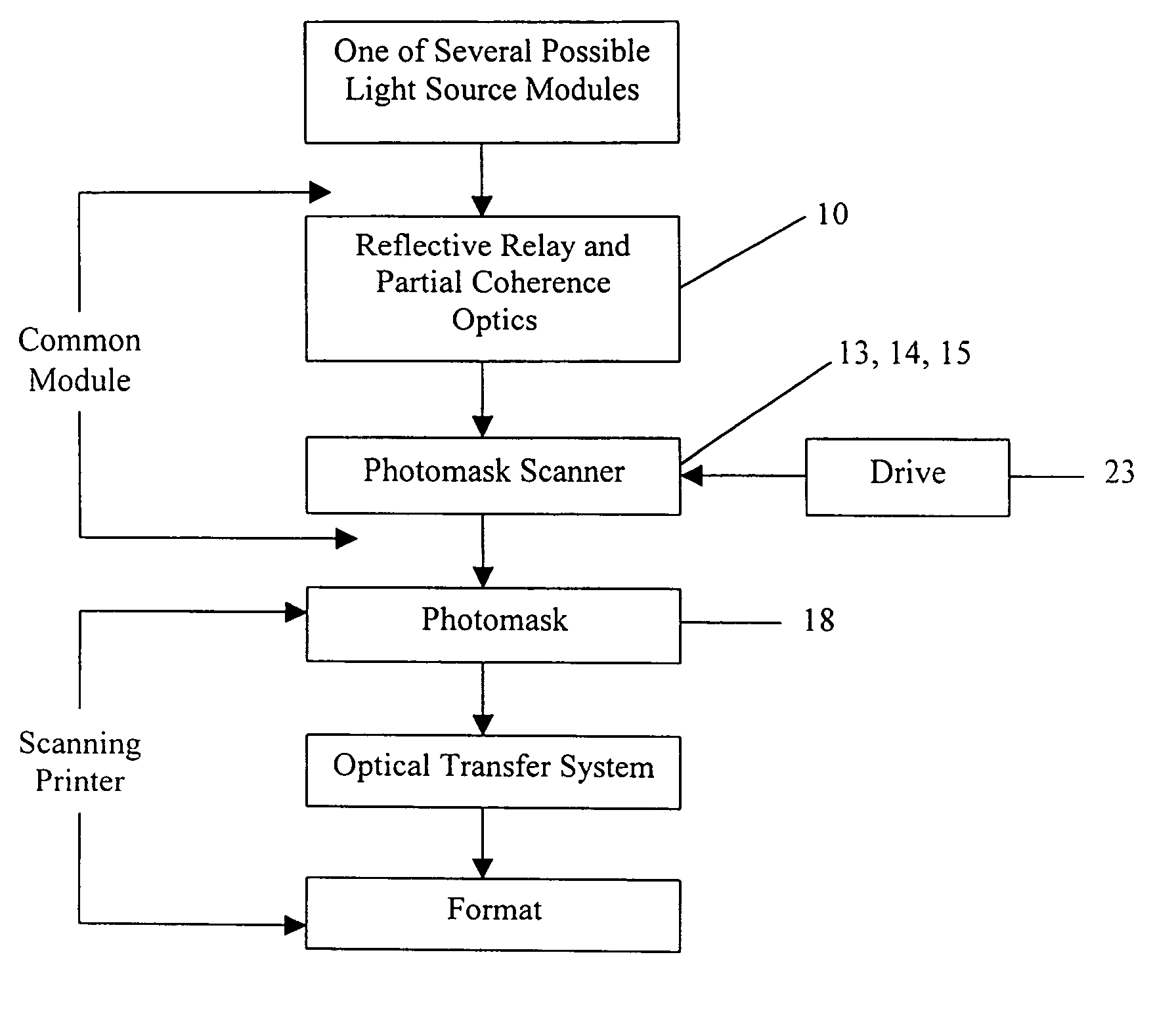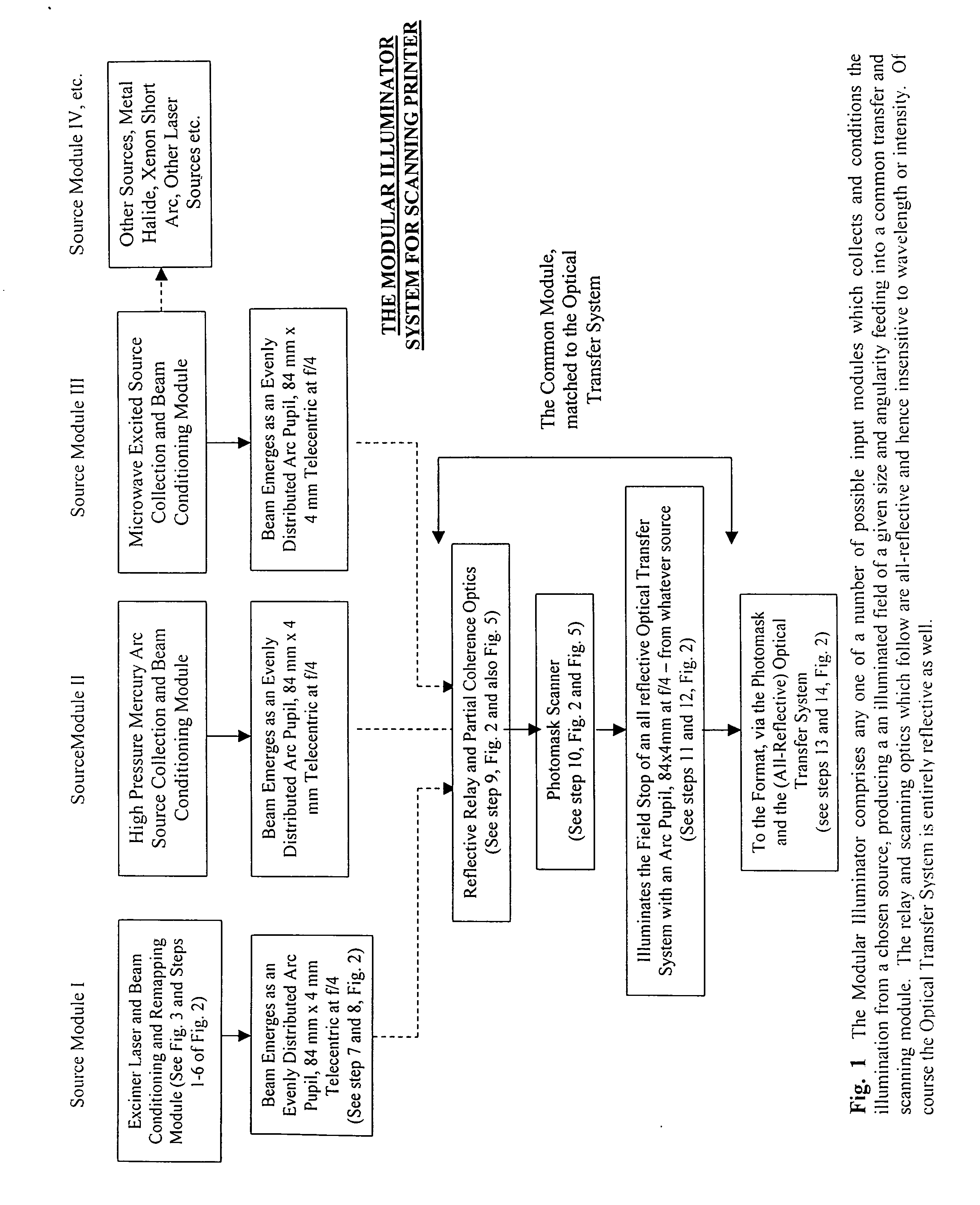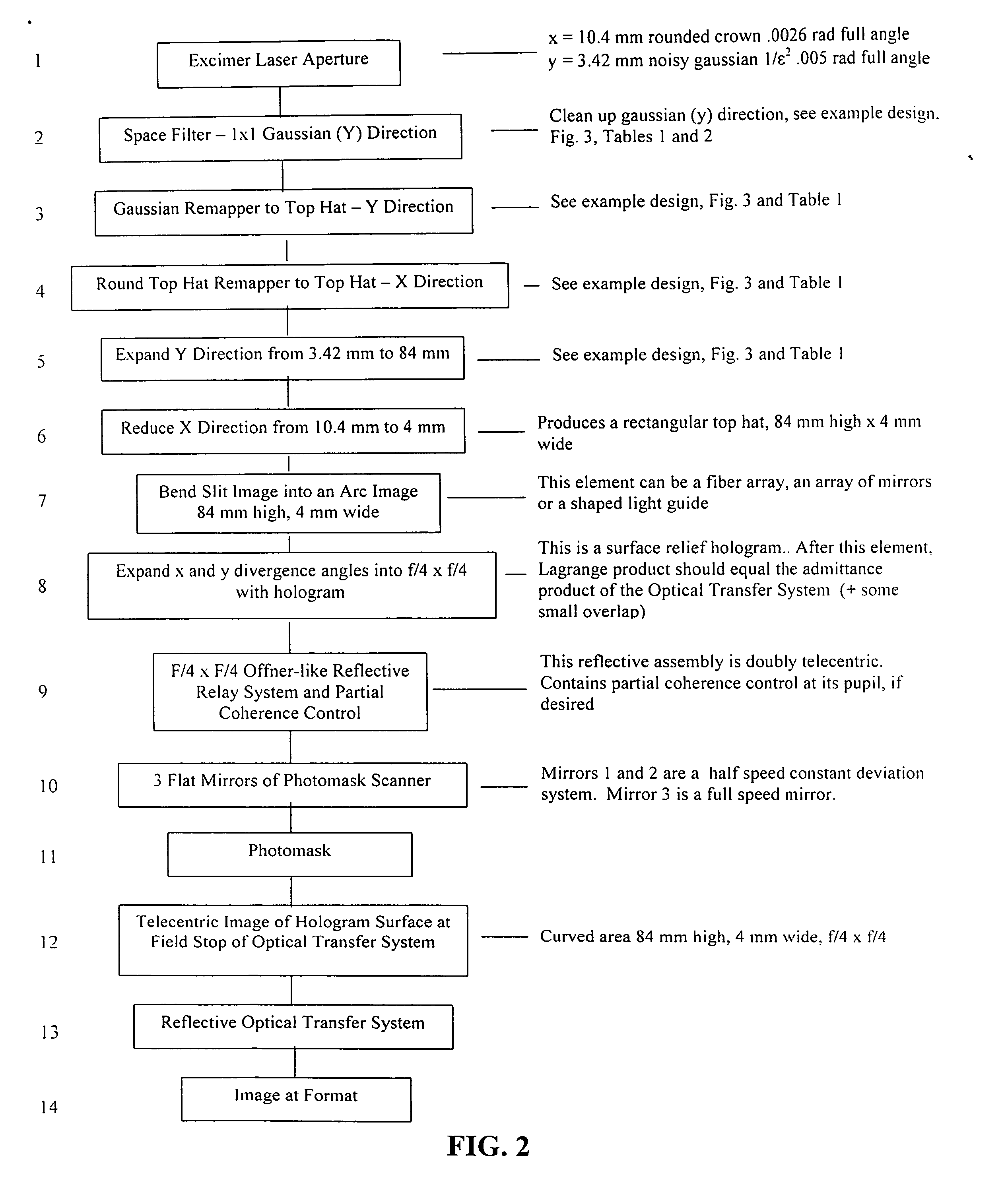Modular illuminator for a scanning printer
- Summary
- Abstract
- Description
- Claims
- Application Information
AI Technical Summary
Benefits of technology
Problems solved by technology
Method used
Image
Examples
Embodiment Construction
[0031] To illustrate the principle of the modular illuminator, I choose a design example based upon the downstream parameters of the printer described in Whitney '020. The 1-to-1 Offner-like reflective Optical Transfer System of that design has an arc shaped field stop, 84 mm. high, 4 mm. wide. The input optics must be telecentric and have a solid angle of admittance of f / 4×f / 4. The etendue of the Optical Transfer System in that design, using small angle approximations, is about:
8.4 cm The height of the illuminated input field×0.4 cm The width of the illuminated input field×0.25 rad The angular subtence of the width of the pupil as seen from the input field.×0.25 rad The angular subtence of the height of the pupil as seen from the input field.×π / 4 Conversion from a square to a circular pupil =0.165 cm2ster
This is the approximate etendue of the Optical Transfer System, the imaging optical assembly described in Whitney '020.
[0032] An excimer laser is chosen as an illumination sourc...
PUM
 Login to View More
Login to View More Abstract
Description
Claims
Application Information
 Login to View More
Login to View More - R&D
- Intellectual Property
- Life Sciences
- Materials
- Tech Scout
- Unparalleled Data Quality
- Higher Quality Content
- 60% Fewer Hallucinations
Browse by: Latest US Patents, China's latest patents, Technical Efficacy Thesaurus, Application Domain, Technology Topic, Popular Technical Reports.
© 2025 PatSnap. All rights reserved.Legal|Privacy policy|Modern Slavery Act Transparency Statement|Sitemap|About US| Contact US: help@patsnap.com



